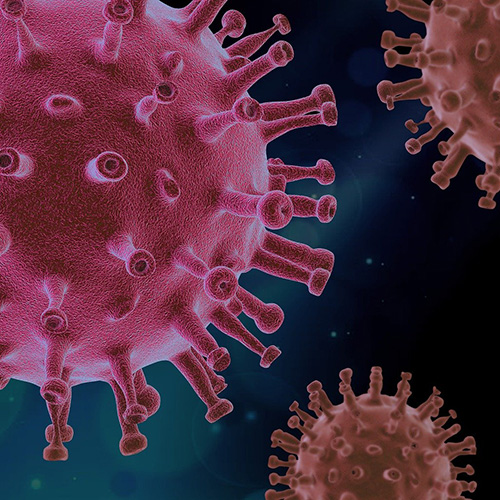“I work in the Milner Centre for Evolution, specialising in infectious diseases that spread between animals and humans – so-called zoonotic diseases. Covid-19 is caused by a virus called SARS-CoV2 which likely evolved in bats. Bats are associated with many other viruses, including rabies and Ebola. They have extraordinary immune systems that can repair damage in their DNA and they also live a very long time relative to their body size. This means they go through life picking up all sorts of diseases and end up as a little bag of viruses that don’t affect them but can be passed on to other species.
“It’s possible that humans have been in contact with bats for a long time. Some societies would have lived in caves so it may be that some diseases evolved during primeval times to spread between bats and humans because we were living in proximity. Making the jump from animals to humans is a difficult thing for a virus to do, because every mammal has specific immune defences. It usually takes a virus a while to adapt to a new host before it can start to transmit, but Covid-19 seemed to have developed its own skeleton key.
“One theory behind this is the pressure on ecosystems around the world. Not only are humans encountering exotic animals more than ever before, different species are also coming into contact with one another. Different bats are hibernating together in caves at a higher density, and it may be that this has put pressure on viruses to jump from one bat species to another, so they’re getting better adapting to new hosts.
Once a virus can get from one bat species to another, it’s a smaller jump to infect another mammal, such as humans.
“There are three major forms of disease transmission – one is ingesting dirty water or contaminated food, the second is via an intermediate vector such as a mosquito that can pass on malaria, and the third major route is respiratory, which is what we think we’re seeing with this virus. It’s believed that droplets of moisture are released by simply exhaling and virus particles can travel up to two metres before falling to the ground and dying.
“We haven’t seen this strain of coronavirus before and neither have our immune systems. It’s like when Columbus went to the New World and brought with him measles and TB and whole societies were decimated. Before the outbreak, all eyes were on flu, which would have been simpler in terms of producing a vaccine and therapeutic drugs. The coronavirus family of viruses is completely different so we’re starting from scratch.
“Looking forward, this pandemic can be seen as part of a pattern of an increasingly frequent ‘spillover’ of pathogens from animals to humans over recent decades. Hopefully we will emerge from this crisis with a clearer perspective on the public health risks resulting from increasing pressure on natural ecosystems, as well as those from intensive farming.”
